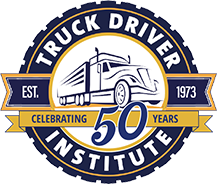What is Trucking Automation?
With advances in technology occurring every day, the trucking industry may see many types of new technology coming in the future. Trucking automation is a very real possibility for the future of trucking. While there are many benefits to having automated trucks, it can pose many threats to the trucking industry as we know it. Whether you are interested in automated vehicles or are a knowledgeable truck driver, read on to find out more about trucking automation.
What is Trucking Automation?
Trucking automation refers to self-driving commercial trucks that require no operation from a driver. While there are many self-driving cars and trucks on the market for regular consumers to buy, there are no fully automated commercial vehicles. Automated vehicles use a combination of sensors and artificial intelligence (AI) software in order to drive the vehicle without any human interference. While fully automated trucks may not be a possibility for many years, semi-automated trucks are currently being used. These trucks have adaptive cruise, as well as lane and brake assistance which aids truck drivers in keeping themselves and their vehicle safe. Although vehicle automation has made many technological advancements throughout history, the possibility of fully automated trucks could still be a few years away. Several technological advancements need to take place in order to ensure that a commercial truck will be safe enough to be fully automated.
Levels of Trucking Automation
Not every truck that is automated will have fully autonomous capabilities. With any vehicle, there are five possible levels of automation. Level 0, or no automation refers to a completely human-operated vehicle. Most vehicles today are no longer level 0. The next is level 1. Most vehicles today are level 1 automation. They have cruise control, adaptive cruise control, and lane assist. Level 2 vehicles are becoming more common today. These can have self-parking capabilities, as well as automatic braking and lane changing ability.
Level 3 includes being able to accelerate around other vehicles, monitor surroundings, change lanes, as well as control steering, throttle, and braking. These vehicles usually only require a driver to be ready in a difficult situation. Level 4 is a high level of automation. Most functions are taken out of the driver’s hands and the driver is only needed in case of emergencies. Level 5 is a fully automated vehicle. Vehicles at a level 5 require zero human attention and are fully autonomous. Not many vehicles are a level 5 as most require a human to be present.
Advantages of Trucking Automation
Trucking automation can solve several issues that are present in the trucking industry. Being a truck driver requires long hours of sitting in one position which can be hard on an individual’s physical and mental health. While some automated trucks may still require a driver in case of emergencies, this could alleviate some of the health risks that truck driving can cause. Additionally, automated trucks could increase safety for the driver and vehicle.
Humans can become distracted, as well as accelerate or brake too hard. Trucking automation could solve these issues due to the nature of AI. The software would be able to detect where and how far a certain obstacle is and break or accelerate accordingly, ensuring that other drivers are safe. Additionally, AI can make driving more consistent. While humans may drive differently depending on the time of day or how they are feeling, automated trucks would drive the same every time, ensuring further safety.
The national truck driving shortage has been a large issue for many years. While trucking automation would not completely eliminate the need for drivers, it could supplement where shortages are the most severe. The trucking shortage has been extremely hard on many industries and having a possible solution could alleviate some of the stress it has put on companies.
Disadvantages of Trucking Automation
While the future of trucking automation looks to have many benefits for the trucking industry, there are many possible ways that it could pose risks. One of the biggest concerns is the loss of jobs. While currently, most automated vehicles require a human presence, the future could hold completely autonomous vehicles, eliminating the need for truck drivers. Individuals also worry that trucking automation could eliminate the need for experienced drivers.
With any technology, there is always a risk of malfunction. Due to automated trucks using AI in order to operate, there is a potential that they could malfunction and cause an accident if not monitored by a driver. Fully automated trucks may still be many years away due to the potential safety risk that technology can have. Fully automated trucks could also potentially increase the number of accidents due to the possibility of malfunction, which is something else to take into account. Additionally, humans are often able to account for future issues such as unsafe road conditions, warranting the use of an alternative route. AI may not yet be advanced enough for it to be able to account for these types of issues.
Just as with electric vehicles, automated vehicles can be expensive. The increase in budget that would be needed to have a fully automated fleet of trucks may not be worth it to many carriers. Paying skilled truck drivers could be more worth it than investing in a number of automated trucks.
Changes in the trucking industry would call for a change in federal and state licensing requirements. These requirements’ number one priority is to keep drivers safe. If regulators deem that automated trucks are not 100 percent safe, then it will be difficult for a carrier to convert to fully automated trucks.
Become a Truck Driver Today
Whether trucking automation is in the near future or not, the need for experienced truck drivers is not going away. With Truck Driver Institute, you can be one of the next truck drivers on the road. TDI has been teaching the future drivers of America since 1973 and is the largest truck driving school East of the Rockies. Get started with TDI today and be on your way to becoming a commercial truck driver in under three weeks.
Get Started
Get your Class A CDL in our friendly, supportive CDL training program. TRAIN with experienced instructors – multiple good-paying, secure job choices with benefits available for eligible graduates. EARN $700 – $1000+ / week to start as a truck driver. Get started today by filling out the form below. We look forward to hearing from you!

